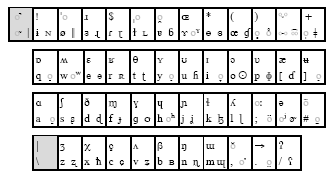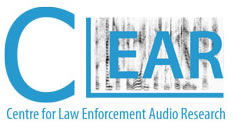Phonetic Symbols, Keyboards and TranscriptionThis page provides some information and resources for the use of the International Phonetics Association alphabet of phonetic symbols for the transcription of speech using computers.
Unicode Phonetic Keyboard and SIL Fonts
Guide to the use of Unicode Phonetic SymbolsJohn Wells has written a number of pages which give more information about the set of phonetic symbols available in Unicode, and about how these can be used in Microsoft Word and other applications: IPA-SAM Phonetic FontsThe IPA-SAM fonts are a set of TrueType fonts (not Unicode) suitable for Windows and MacOS that include all current IPA symbols. The keyboard layout is designed to be compatible with SAMPA. SAMPA–SAM Phonetic AlphabetSAMPA is a phonetic transcription coding that uses normal ASCII characters as replacements for IPA symbols. It has been designed for phonemic/broad phonetic transcription of European languages. Spoken Phonetic TranscriptionThe PHONWEB page provides a facility to read out SAMPA phonetic transcription for English in synthetic speech! |
Some other pages on our site you may enjoy ...Phonetic symbols, fonts and keyboards
CochSim - Cochlear Simulation teaching tool
CLEAR - Centre for Law-Enforcement Audio Research
|
|
University College London - Gower Street - London - WC1E 6BT - |
 The Unicode Phonetic Keyboard is an installable keyboard for Windows PCs that provides a convenient keyboard layout for the word-processing of phonetic transcription using Unicode fonts. The installation package comes complete with two Unicode fonts:
The Unicode Phonetic Keyboard is an installable keyboard for Windows PCs that provides a convenient keyboard layout for the word-processing of phonetic transcription using Unicode fonts. The installation package comes complete with two Unicode fonts: 

